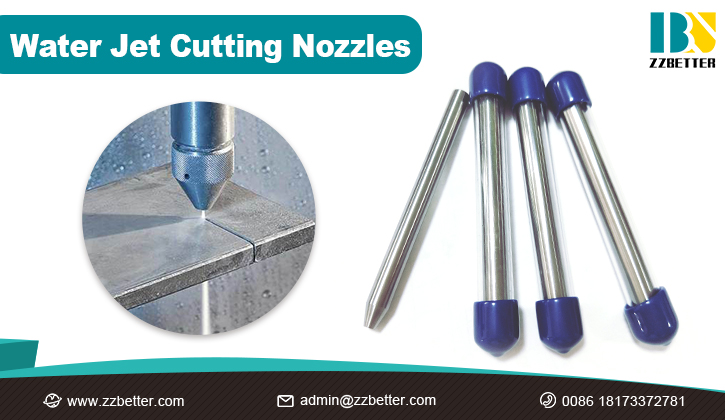3 Questions about Waterjet Cutting
3 Questions about Waterjet Cutting

As waterjet cutting became a practical cutting method, some people may still have some questions about it. This passage is to answer the following questions:
1. How is it possible to do cutting work with water?
2. What can be cut with a waterjet nozzle?
3. What are the advantages of waterjet cutting?
Q: How is it possible to do cutting work with water?
A: Waterjet cutting is to do cutting work with water. It is possible and can be realized. You can feel the principle by squirting water out of a hose while covering the opening with your fingers. The water that squirts out while the hose opening is partially covered has strong momentum and is propelled a long way. The waterjet cutting method applies the same principle. Narrowing the opening from which the water is projected increases the water pressure, transforming it into a sharp-cutting implement. So the waterjet cutting method can realize high water pressure of 392 MPa. This corresponds to water pressure approximately 2,000 times greater than that of tap water. The pressurized water blasts out at an incredible speed, approximately three times the speed of sound.
Q: What can be cut with a waterjet nozzle?
A: Almost all materials.
The waterjet cutting method can be divided into mainly two kinds of waterjet cutting method. One is pure waterjet cutting, and the other is abrasive waterjet cutting. The former one is to cut materials only with water, and suitable for some soft materials, such as rubber, nylon, paper, cloth, and plastic, as well as water. The latter one is to cut harder and more abrasive materials, including metals, glass, composites, and stone, with abrasive.
Many materials, can be cut by the waterjet cutting method. They can be categorized into these types: metals, wood, rubber, ceramics, glass, stone, tiles, food, composites, and paper. Metals include titanium, aluminum foil, steel, copper, and brass. Waterjet cutting can even be used to cut thicker workpieces that can’t be cut with laser or plasma.
Q: What are the advantages of waterjet cutting?
A: 1. Better Edge Quality
The industrial water jet cutting process gives smoothly and uniformly cut edges with no burrs when used. This means, unlike many other finishing, you don’t need secondary processes to complement the quality of the waterjet cutting process. This simplifies the entire cutting process for manufacturers.
In addition, you can cut precisely through different shapes and even 3D materials. This is often a stumbling block for many other cutting processes, as the resultant edge quality is not up to par in complex materials.
2. Improved Operating Efficiency
In terms of efficiency, few come close to waterjet cutting in the industry. For one, because you do not need additional finishing, you get to save valuable time and complete the cutting process fast.
With waterjet technology, you can cut through materials relatively rapidly and do this without having to worry about the state of materials afterward.
3. Suitable for Many Materials
Versatility is one of waterjet technology’s biggest selling points. There are fewer processes that are suitable for a vast diversity of materials with varying hardness. With waterjets, you can cut through materials as thick as 200mm and materials as thin as paper.
What’s more, you don’t have to worry about deformity during cutting as long as you use the right waterjet cutting technology and handle the process expertly.
4. Tool Changes Not Required
When working with a pure waterjet cutter and you need to cut through something very thick, all you need to do is attach a mixing chamber to the nozzle, and you can get abrasive cutting. You don’t need to spend money on an extra cutter.
Furthermore, for more minor changes in thickness where you do not need another technology, you can alter the feed rate of the cutter. This enables you to meet the speed requirement required to cut the material.
5. No Heat Affected Zones
Thermal distortion was one of the cutting industry’s most significant problems before the waterjet cutting process. This occurs because many industrial cutting processes generate heat during their operation. After prolonged use, this can lead to warping, molecular deformity, or inaccurate cutting of the material.
Aside from potentially damaging the material, the heat may also constitute a health hazard to operators through burns.
Industrial water jet cutting, though, is a non-thermal process. It does not generate heat, making it suitable for heat-sensitive materials.
6. Environment Friendly
The waterjet technology involves using highly pressurized water for cutting. There is no need to add chemicals for the cutting process, removing the risk of hazardous waste during and after cutting. There is also no dust generation, making it safe for handlers.

If you are interested in tungsten carbide products and want more information and details, you can CONTACT US by phone or mail at the left, or SEND US MAIL at the bottom of the page.





















